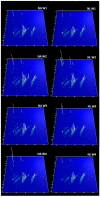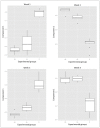Tomato Juice Consumption Modifies the Urinary Peptide Profile in Sprague-Dawley Rats with Induced Hepatic Steatosis
- PMID: 27792191
- PMCID: PMC5133790
- DOI: 10.3390/ijms17111789
Tomato Juice Consumption Modifies the Urinary Peptide Profile in Sprague-Dawley Rats with Induced Hepatic Steatosis
Abstract
Non-alcoholic fatty liver disease (NAFLD) is the most common liver disorder in Western countries, with a high prevalence, and has been shown to increase the risk of type 2 diabetes, cardiovascular disease (CVD), etc. Tomato products contain several natural antioxidants, including lycopene-which has displayed a preventive effect on the development of steatosis and CVD. Accordingly, the aim of the present work was to evaluate the effect of tomato juice consumption on the urinary peptide profile in rats with NAFLD induced by an atherogenic diet and to identify potential peptide biomarkers for diagnosis. Urine samples, collected weekly for four weeks, were analyzed by capillary electrophoresis (CE) coupled to a mass spectrometer (MS). A partial least squares-discriminant analysis (PLS-DA) was carried out to explore the association between differential peptides and treatments. Among the 888 peptides initially identified, a total of 55 were obtained as potential biomarkers. Rats with steatosis after tomato juice intake showed a profile intermediate between that of healthy rats and that of rats with induced hepatic steatosis. Accordingly, tomato products could be considered as a dietary strategy for the impairment of NAFLD, although further research should be carried out to develop a specific biomarkers panel for NAFLD.
Keywords: biomarkers; capillary electrophoresis coupled to a mass spectrometer (CE-MS); diagnosis; liver; non-alcoholic fatty liver disease (NAFLD); peptidome; proteome; tomato; urine.
Conflict of interest statement
The authors declare no conflict of interest.
Figures




References
MeSH terms
Substances
LinkOut - more resources
Full Text Sources
Other Literature Sources
Medical

